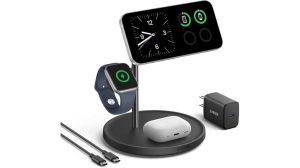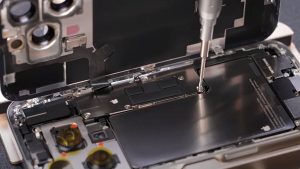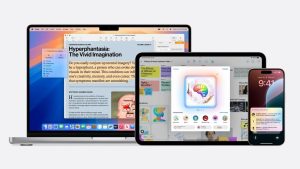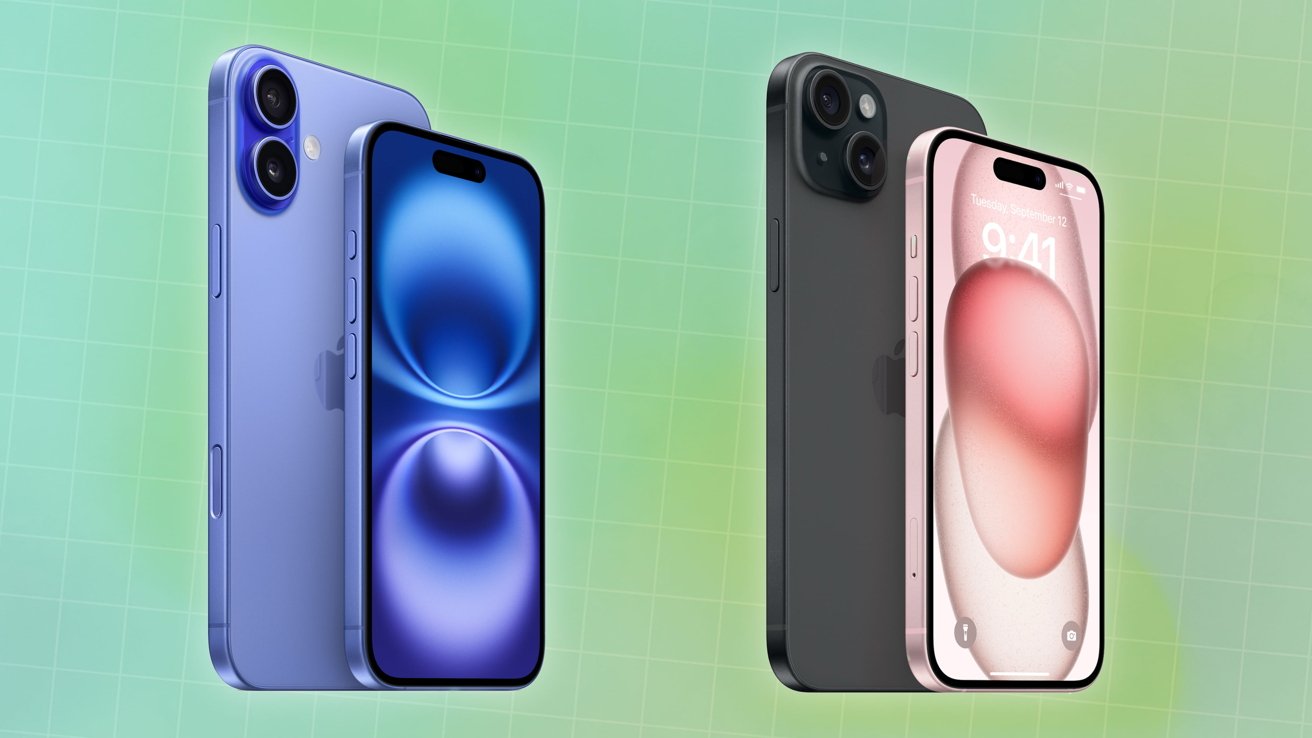
Apple’s latest edition of the iPhone 16 has the A18 upgrade for Apple Intelligence, as well as Camera Control. Here’s what else is different compared to the iPhone 15.
Apple’s September 9 special event saw the roll out of the latest generation of iPhone models. The iPhone 16 range includes, as usual, a few Pro editions alongside the standard-tier releases.
For 2024, the focus of the iPhone 16 is on Apple Intelligence, and the chip upgrade to facilitate the features. The physical controls also got some much-needed attention too.
What follows is a break down of the specifications of the iPhone 16 and iPhone 15, as well as their Plus counterparts.
iPhone 16 vs iPhone 15 – Specifications
| Specifications | iPhone 16, iPhone 16 Plus | iPhone 15, iPhone 15 Plus |
|---|---|---|
| Price (starting) | $799 (16), $899 (16 Plus) Check offers | $799 (15), $899 (15 Plus) Check incentives |
| Dimensions (inches) | 5.81 x 2.82 x 0.31 (16), 6.33 x 3.06 x 0.31 (16 Plus) | 5.81 x 2.82 x 0.31 (15), 6.33 x 3.06 x 0.31 (15 Plus) |
| Weight (ounces) | 6 (16), 7.03 (16 Plus) | 6.02 (15), 7.09 (15 Plus) |
| Side controls | Action Button, Camera Control | Ring/Silent Switch |
| Processor | A18 5-core GPU | A16 Bionic 5-core GPU |
| Storage | 128GB, 256GB, 512GB | 128GB, 256GB, 512GB |
| Display type | 6.1-inch Super Retina XDR (16), 6.7-inch Super Retina XDR (16 Plus) | 6.1-inch Super Retina XDR (15), 6.7-inch Super Retina XDR (15 Plus) |
| Resolution | 2,556 x 1,179 at 460ppi (16), 2,796 x 1,290 at 460ppi (16 Plus) | 2,556 x 1,179 at 460ppi (15), 2,796 x 1,290 at 460ppi (15 Plus) |
| True Tone | Yes | Yes |
| Biometrics | Face ID | Face ID |
| Connectivity | 5G (Sub-6GHz and mmWave), Gigabit-class LTE, Wi-Fi 7, Bluetooth 5.3, Second-gen Ultra Wideband, Emergency SOS via Satellite, Roadside Assistance via Satellite, USB-C, Thread support | 5G (Sub-6GHz and mmWave), Gigabit-class LTE, Wi-Fi 6, Bluetooth 5.3, Second-gen Ultra Wideband, Emergency SOS via Satellite, Roadside Assistance via Satellite, USB-C |
| Rear Cameras | 48MP Fusion, 12MP Ultra Wide with Macro | 48MP Main, 12MP Ultra Wide |
| Video | 4K 60fps, 4K 60fps HDR with Dolby Vision, 1080p 240fps Slo-Mo, Spatial Video, Macro Video, Sensor-shift optical image stabilization, Action Mode | 4K 60fps, 4K 60fps HDR with Dolby Vision, 1080p 240fps Slo-Mo, Sensor-shift optical image stabilization, Action Mode |
| Front Camera | 12MP TrueDepth, Autofocus | 12MP TrueDepth, Autofocus |
| Battery Size (Video playback time) | Up to 22 hours (16), Up to 27 hours (16 Plus) | Up to 20 hours (15), Up to 26 hours (15 Plus) |
| Colors | Black, White, Teal, Pink, Ultramarine | Black, Blue, Green, Yellow, Pink |
iPhone 16 vs iPhone 15 – Physical dimensions
The iPhone 15 saw a small amount of growth in 2023, with a footprint of 5.81 inches by 2.82 inches. The Plus model was comparably similar to its predecessor at 6.33 inches by 3.06 inches.
When it comes to the iPhone 16, there’s no actual change in physical dimensions at all. Both the iPhone 16 and iPhone 16 Plus match their iPhone 15 counterparts in terms of footprint.
When it comes to thickness, all of the models are 0.31 inches thin.
On the weight side, the iPhone 15 generation were 6.02 ounces and 7.09 ounces respective of size. The iPhone 16 series had a tiny diet, with the Plus slimming to 7.03 ounces and the iPhone 16 itself to 6 ounces dead.
The construction of the iPhone 15 is based on the usual glass sandwich with a metal frame filling. This includes Ceramic Shield protection on the front glass and aerospace-grade aluminum in the middle.
There’s no change to the basic construction of the iPhone 16 models at all, with them using a pretty similar aluminum and glass sandwich approach. Even so, there are still differences.
For a start, the camera bump on the back is no longer a square on the iPhone 16. Instead of diagonally-separated cameras, they’re now in a vertical alignment.
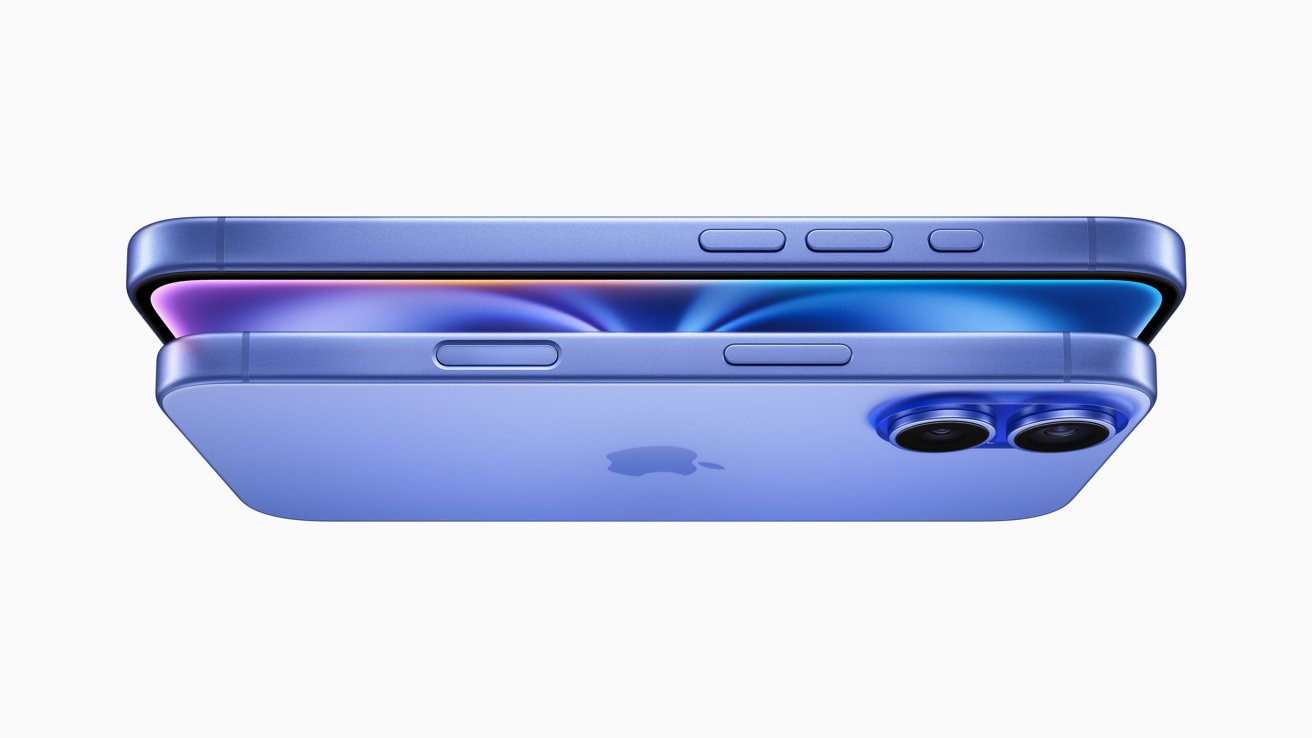
iPhone 16 vs iPhone 15: The iPhone 16 gains the Action Button and Camera Control
The buttons on the side are also updated for the iPhone 16.
The new models follow the iPhone 15 Pro in eliminating the mute toggle switch in favor of the Action Button. This can be used to mute the ringer, but it can also be configured to perform various other functions.
An addition to the iPhone 16 and Plus is the Camera Control, a side button that is placed so you can use the iPhone like a conventional point-and-shoot camera. It’s also a capacitive button, so you can control various settings by sliding your finger along it.
iPhone 16 vs iPhone 15 – Display
The iPhone 15 and iPhone 15 Plus enjoyed small upgrades from the iPhone 14’s display, and measure 6.1 inches and 6.7 inches respectively. At 2,556 by 1,179 pixels for the iPhone 15 and 2,796 by 1,290 for the Plus, the two have pixel densities of 460 pixels per inch.
For the iPhone 16, Apple didn’t change these specifications at all. The screens are the same size and resolution.
The similarities continue further down the spec list, with the OLED Super Retina XDR displays for both generations having a contrast ratio of 2,000,000:1. Brightness is similarly static at 1,000 nits at maximum for typical SDR content, 1,600 nits at peak for HDR, and 2,000 nits peak for outdoor usage.
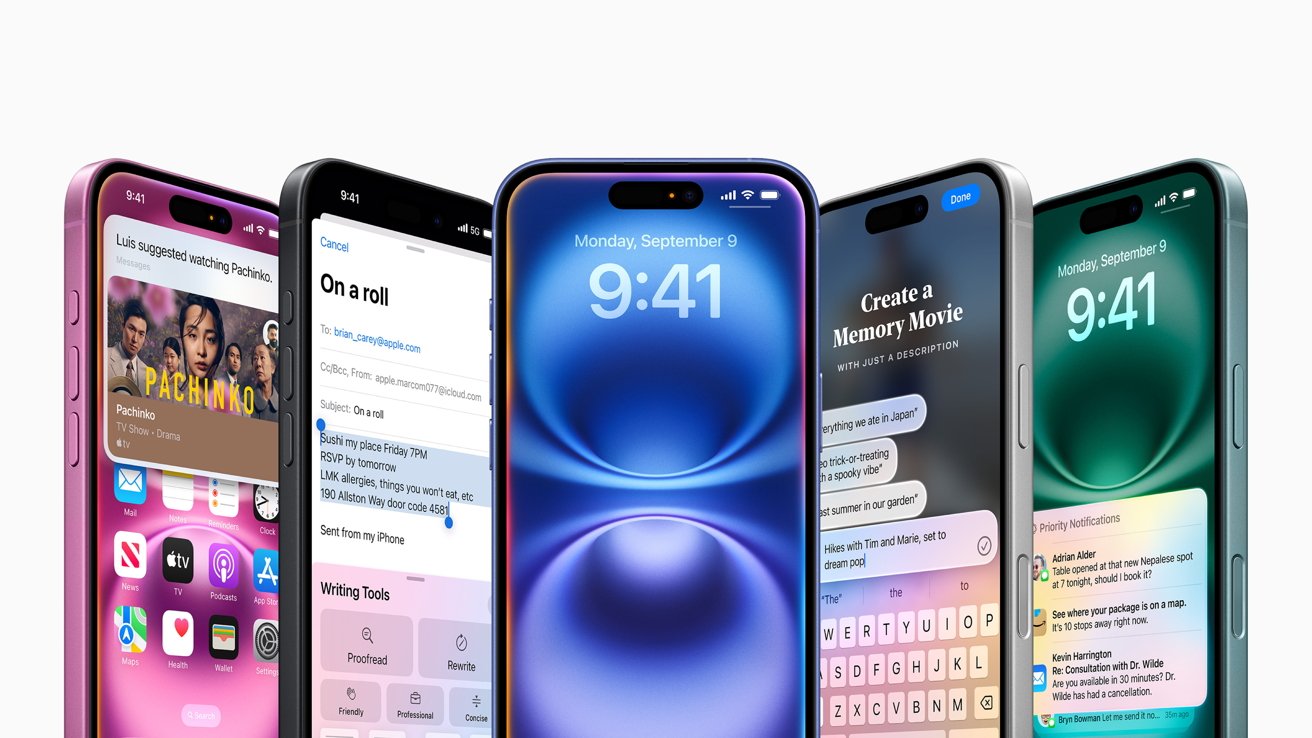
iPhone 16 vs iPhone 15: There’s no change to the displays between the generations.
At the top of the screen, the iPhone 15 was the first non-Pro models to switch out the notch in favor of the Dynamic Island. This allowed the punch hole space in the screen hiding the camera to be hidden by useful UI elemenets.
The iPhone 16 retains this highly useful bit of software camouflage of a physical element.
Apple also included True Tone, Wide color (P3), Haptic Touch, and a fingerprint-resistant oleophobic coating on all of the models.
To end users, they can expect the same sort of display in the iPhone 16 that Apple included in the iPhone 15.
iPhone 16 vs iPhone 15 – Cameras
On the back of the iPhone 15 are a pair of cameras, in a square camera bump. Apple switched this up with a vertical arrangement in the iPhone 15, reducing the bump’s overall size.
The iPhone 15 starts off with a 48MP Main camera with an f/1.6 aperture, sensor-shift optical image stabilization, and 100% Focus Pixels.
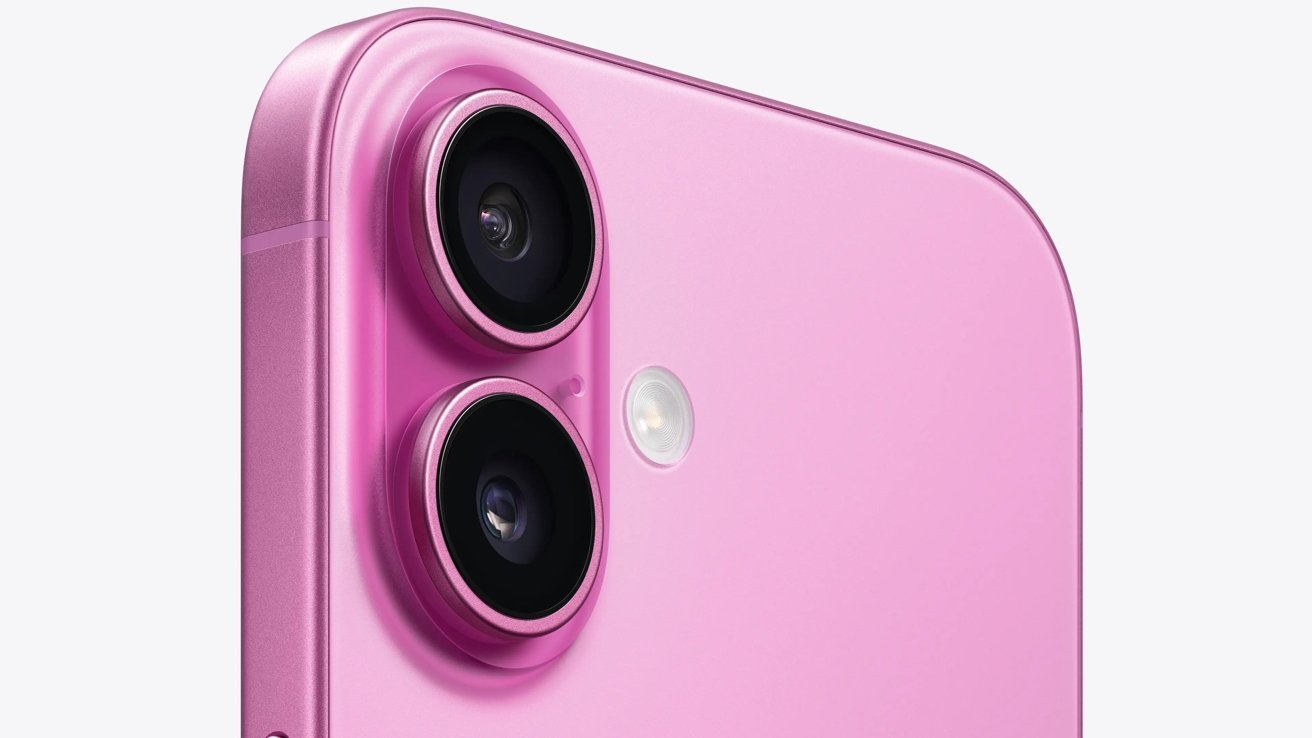
iPhone 16 vs iPhone 15: Apple has vertically aligned the rear cameras for the iPhone 16.
The massive Main sensor is also big enough to pull off a party trick of becoming a virtual 2x Telephoto lens. This is simply pulled off by heavily cropping into the 48MP sensor’s image.
The other camera on the iPhone 15 is real, though. A 12MP Ultra Wide camera with an f/2.4 aperture and a 120-degree field of view.
Overall, you have a 2x optical zoom in and a 2x optical zoom out, giving the iPhone 15 a 4x optical zoom range. The digital zoom maxes out at 10x.
For the iPhone 16, Apple practically uses the same camera specifications, with relatively few changes. The least significant is probably Apple’s decision to change the name of the Main camera to the Fusion camera.
This time around, the iPhone 16’s gaining a Macro mode from the iPhone 15 Pro models. The Fusion camera also has a new anti-reflective lens coating, which should minimize light artifacts.
The new camera arrangement on the back also affords the iPhone 16 the ability to take Spatial Photos, which can create 3D images viewable on an Apple Vision Pro.
In terms of features, the rear cameras include a True Tone flash, Sapphire crystal lenses, and computational photography benefits from the Photonic Engine and Deep Fusion. There’s also Portrait mode with Portrait Lighting, Night Mode, 63MP panoramas, Photographic Styles, red-eye correction, and others.
The iPhone 16 does upgrade the Photographic Styles with a new approach, including local adjustments of color, highlights, and shadows in real time. There’s also more of an understanding of skin tones, and a wider selection of styles too.
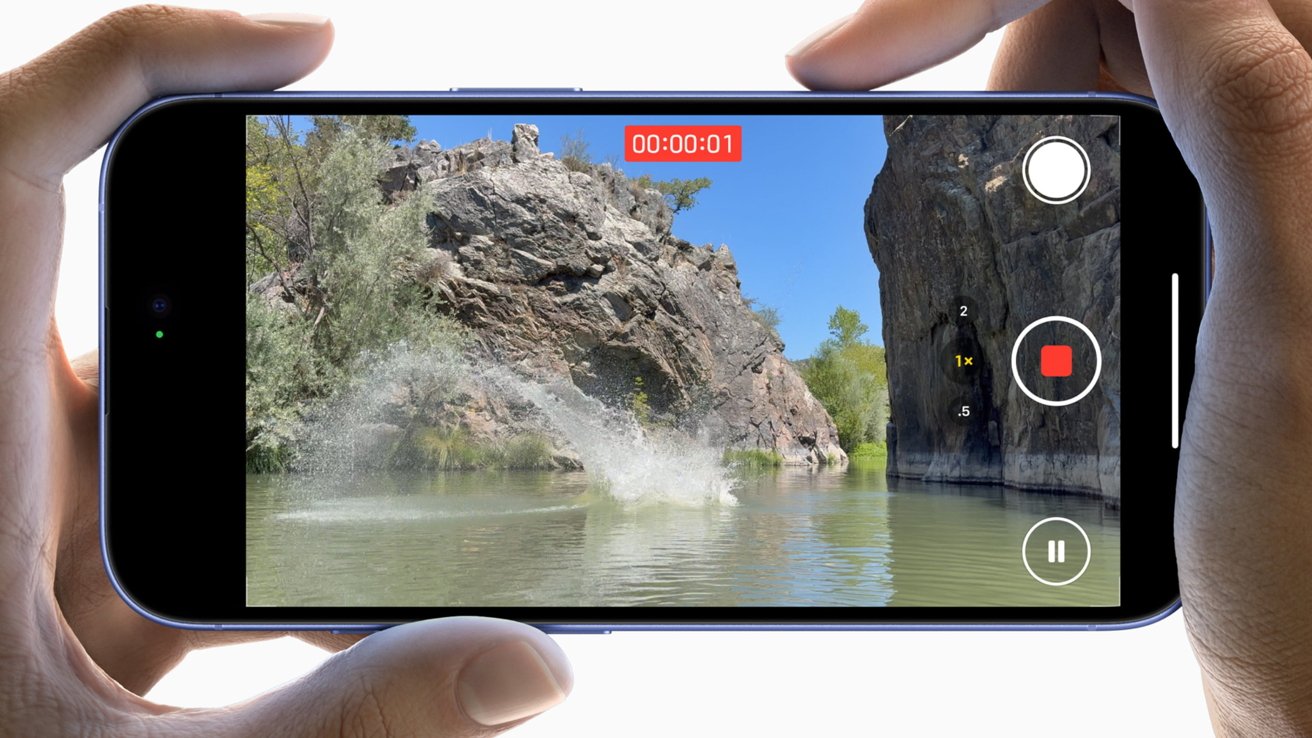
iPhone 16 vs iPhone 15: Camera Control will make iPhone photography more like a conventional camera.
The front camera of the iPhone 15 is the dependable TrueDepth camera array. Centered around a 12MP sensor, it has an f/1.9 aperture with Focus Pixels, and the same still image benefits as the rear cameras, except for panoramas.
The front camera also benefits from 3D depth mapping. This is typically used for Face ID, but it can also be employed for AR filters in some apps, among other tasks.
The iPhone 16 doesn’t mess around with this arrangement at all. It would’ve been nice to see an upgraded resolution here, but not even the Pro models had that change.
For video, the rear cameras on the iPhone 15 can go up to 4K at 60fps with Dolby Vision HDR, 4K 30fps using cinematic video stabilization, a 2.8K 60fps Action mode, and 1080p 240fps Slo-mo.
There’s also continuous autofocus, stereo recording, audio zoom, Night Mode Time-lapse, and Time-lapse with stabilization. You can also take 8MP stills while recording video.
The front camera can also do 4K Dolby Vision video at 60fps, including Cinematic mode at 4K 30fps, and 120fps 1080p Slo-mo.
The iPhone 16 starts off with these video features, but builds on top of them in a few ways. Firstly, there are Macro video modes including slo-mo and time-lapse features.
Just like Spatial Photos, you can also record Spatial Video at 1080p 30fps, again viewable on an Apple Vision Pro.
There’s also Spatial Audio to go with the stereo audio recording, along with a wind noise reduction. Audio Mix is also built-in, so users can easily add in their own music choices and mix that into a recording without necessarily cutting out the subject’s voice.
iPhone 16 vs iPhone 15 – Processing and Performance
For the iPhone 15, Apple changed how it upgraded its chips so that the non-Pro would effectively get the previous year’s Pro chip. After a marginally tweaked A16 in the iPhone 14, the iPhone 15 effectively used the iPhone 14 Pro’s A16 instead.
That gave it a six-core CPU with two performance cores and four efficiency cores, a five-core GPU, and a 16-core Neural Engine.
Made using a second-gen three-nanometer process and skipping the A17 name altogether, the A18 has a similar 6-core CPU setup, but one that Apple claims is 30% faster than the A16 Bionic. It’s also more power efficient, with it capable of using 30% less power under the same load as its predecessor.

iPhone 16 vs iPhone 15: The A18 in the iPhone 16 will prove useful for Apple Intelligence and Photographic Styles processing.
The five-core GPU is also improved running up to 40% faster and 35% more power efficient than the A16. It also has hardware-accelerated ray tracing too, which is five times faster than software-based versions.
One thing that the newer iPhone 16 chip has as an advantage is support for Apple Intelligence, the big push in iOS 18 to introduce generative AI and more smart functions. In the iPhone 15, the A16 only has a Neural Engine capable of 17 trillion operations per second, while the Pro models did support Apple Intelligence with practically double the operations per second.
The iPhone 16’s 16-core Neural Engine is upgraded and, as Apple says, “runs ML models up to 2x faster than the A16 Bionic.” With it capable of up to 35 trillion operations per second, that matches the capabilities needed to power Apple Intelligence to the same level as the iPhone 15 Pro series.
iPhone 16 vs iPhone 15 – Connectivity
The iPhone 15 has support for 5G in both sub-6GHz and mmWave formats, with Gigabit LTE with 4×4 MIMO and carrier aggregation as a backup. This is mirrored in the iPhone 16 lineup.
Apple also included Emergency SOS via Satellite in the iPhone 15 and iPhone 16, so people stuck in black spots could still get emergency assistance. There’s also Roadside Assistance via Satellite, which does the same thing but for vehicles.
On a more local level, the iPhone 15 has Wi-Fi 6 support, as well as Bluetooth 5.3. Ultra Wideband is included, with the iPhone 15 introducing features such as tracking other iPhone 15 handsets using a similar method to how you could track down an AirTag in a room.
This is very similar in the iPhone 16, but Apple instead makes the upgrade to Wi-Fi 7. This is useful if you have the networking infrastructure to take advantage of it.
The iPhone 15 saw Apple finally dispense with Lightning in favor of USB-C. While this allowed users to use the same charging cables as most other modern hardware, Apple kept the speed to Lightning’s USB 2.0 settings, so you got 480Mbps data transfers instead of 10Gbps as seen on the Pro.
Sadly, while the iPhone 16 does use USB-C, Apple has also retained the USB 2.0 speeds.
The iPhone 15 and iPhone 16 also include GPS, GLONASS, Galileo, QZSS, and BeiDou navigational support, along with a digital compass, iBeacon support, and NFC. That last one is mainly used for Apple Pay transactions.
iPhone 16 vs iPhone 15 – Power and Battery
At launch, the iPhone 15 was declared to have a battery capacity that could last for up to 20 hours of local video playback, 16 if streamed, and up to 80 hours of audio. The Plus model managed up to 26 hours for local video, 20 hours streamed, and up to 100 hours of audio playback.
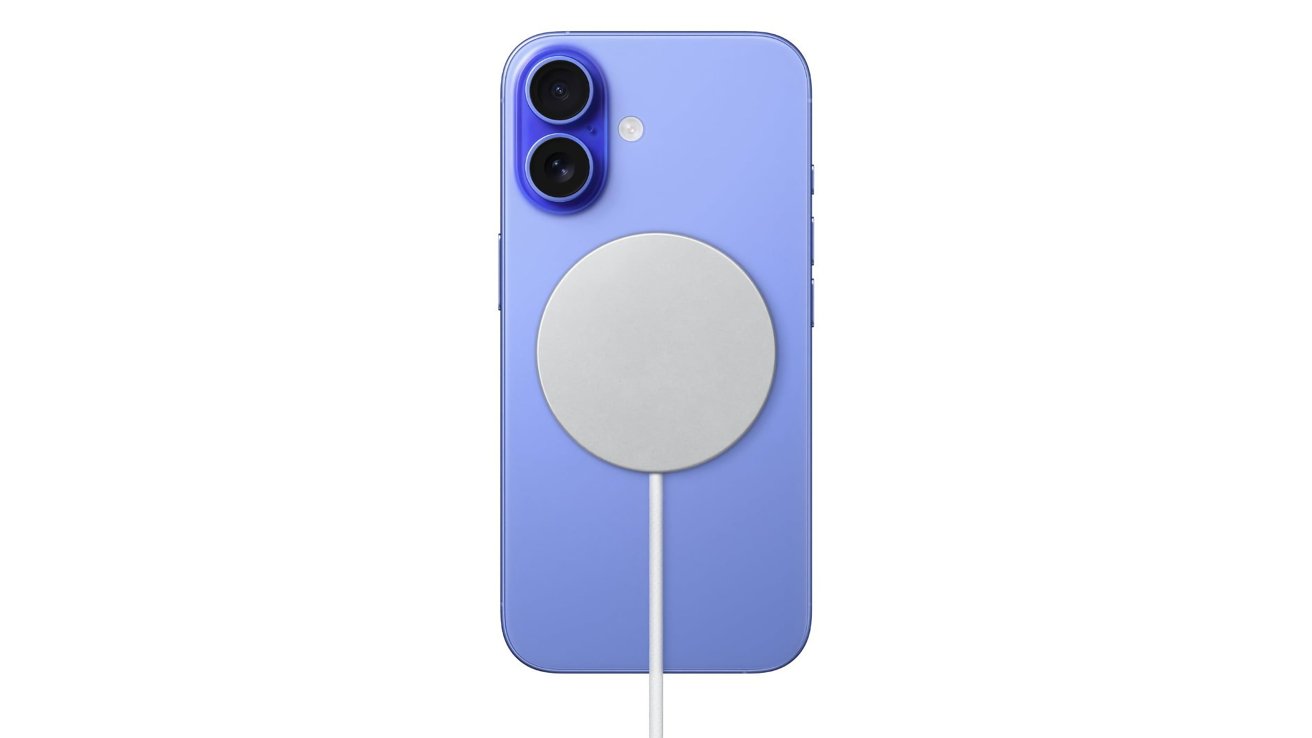
iPhone 16 vs iPhone 15: MagSafe gets a boost in 2024
For 2024, the iPhone 16 enjoys a bit of a boost to its timings. The iPhone 15 can do up to 22 hours of local playback, 18 hours streaming, while the Plus can do 27 hours and 24 hours respectively.
Audio playback hasn’t improved, though, as the new models can still manage up to 80 hours and up to 100 hours, depending on the size.
For recharging, you can take advantage of Fast Charging with USB-C. A 50% charge is possible on the iPhone 15 and Plus within about 30 minutes using a 20W or greater charger.
Apple offers a similar fast charging claim with the iPhone 16 generation, though it seems in reports that it can take up to 45W at a time.
Wireless charging is fairly standard by now, consisting of 15W MagSafe, 15W Qi2, and 7.5W Qi on the iPhone 15. For the iPhone 16, MagSafe is upgraded to 25W.
iPhone 16 vs iPhone 15 – Other Features
Biometric security is handled by Face ID in the iPhone 15, using the front TrueDepth camera array. There’s no change here for the iPhone 16.
The iPhone 15 and Plus have an IP68 splash, water, and dust resistance rating. It can effectively withstand submergence at a depth of up to 6 meters (19.7 feet) for up to half an hour.
The iPhone 16 and iPhone 16 Plus have the same IP68 rating.
iPhone 16 vs iPhone 15 – Capacity, Color, and Pricing
Apple launched the iPhone 15 in three capacities, with the 128GB at $799, 256GB for $899, and 512GB for $1,099. Plus models raised the priced by $100 to $899, $999, and $1,199 respectively.
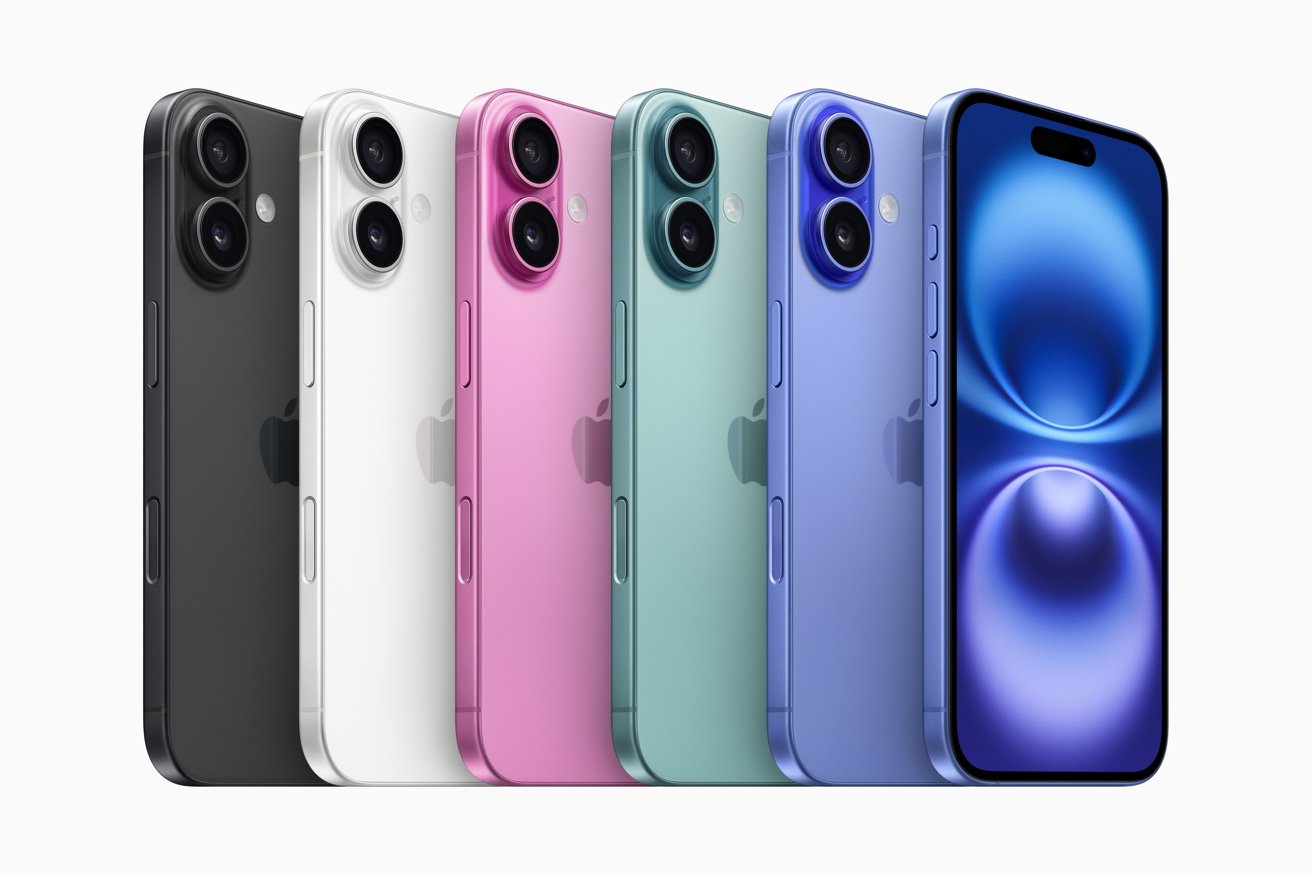
iPhone 16 vs iPhone 15: The iPhone 16 color range.
These prices are mirrored for the iPhone 16, so you’ll pay the same prices for each capacity and size as the iPhone 15 generation.
The iPhone 15 range launched with five colors: Black, Blue, Green, Yellow, and Pink. The iPhone 16 can be acquired in Black, White, Pink, Teal, and Ultramarine.
iPhone 16 vs iPhone 15 – Worth the Upgrade?
Normally, when it comes to inter-year updates, it’s hard to justify telling users of one-year-old iPhones that they should consider moving up to the new model. In most cases, the changes are welcome enough, but unless you had a good enough reason, it wasn’t a plausible thing to do.
For 2024, if we’re looking at the hardware alone, there’s not a massive leap forward here. The rear camera situation has slightly changed, and Camera Control is certainly a good addition, but beyond a performance improvement, there’s nothing that really stands out as a must-have.
At least, that’s the case until you consider software. Since the iPhone 16 uses the A18, it can run the Apple Intelligence features which the iPhone 15 will miss out on completely.
The promise of a smarter smartphone is a strong one, especially with the eventual addition of ChatGPT to Siri. The generative AI imaging features are also handy, as are the writing tools, but Siri’s upgrade will be the main draw.
Again, as usual, owners of the iPhone 14 and earlier models will find the iPhone 16 a great upgrade. But this time, Apple Intelligence may be enough to justify getting a new phone for users of the iPhone 15.
Where to buy the iPhone 16 vs iPhone 15
Wireless carriers are incentivizing the new iPhone 16, along with remaining inventory of the last-gen iPhone 15. AT&T is offering deals to the tune of up to $1,000 off iPhones with an eligible trade.
You can jump straight to the carrier deals below:
You can also find trade-in offers at buyback providers, with exclusive bonuses in effect for a limited time.


